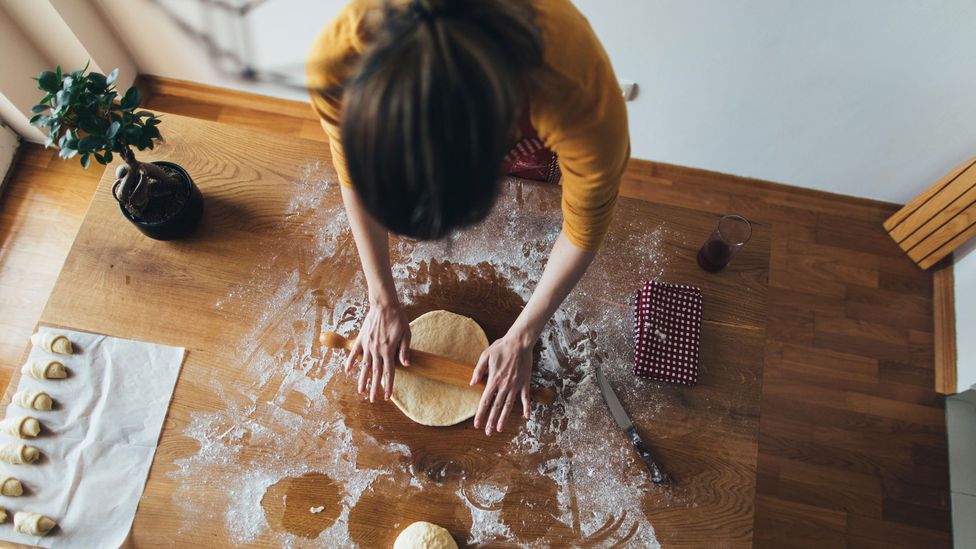
Are you tired of overcooked or mushy pasta? Look no further! In this article, we will explore the art of cooking pasta to perfection - al dente.
With a few simple steps and a little know-how, you can elevate your pasta dishes to a whole new level. From choosing the right pasta to mastering the cooking process, we will provide you with expert tips and tricks to ensure your pasta is consistently flavorful and perfectly cooked every time.
Get ready to impress your family and friends with your newfound pasta-cooking prowess!
Choosing the Perfect Pasta
When selecting the ideal pasta for your culinary masterpiece, it is essential to carefully consider the options available and choose wisely. The shape of the pasta plays a crucial role in how it holds and absorbs the sauce, ultimately affecting the overall taste and texture of the dish.
From long and thin spaghetti to fun and versatile shapes like fusilli or penne, each pasta shape offers a unique experience. Homemade pasta, on the other hand, is a labor of love that elevates any dish to new heights. The satisfaction of creating your pasta from scratch is unparalleled, and the taste and texture are incomparable.
Whether you opt for traditional pasta shapes or decide to venture into the realm of homemade pasta, the key is to select the type that best complements your sauce and desired outcome.
Boiling Water for Pasta
To ensure a perfect al dente texture, it is crucial to properly prepare the boiling water for your pasta. Here are three key steps to follow:

- Use a large pot: Make sure to choose a pot that is large enough to hold the pasta without overcrowding. This will prevent the pasta from sticking together and ensure even cooking.
- Add enough salt: Add a generous amount of salt to the boiling water. This will not only enhance the flavor of the pasta but also help to season it from the inside out.
- Boil vigorously: Once the water is boiling, add the pasta and cook it at a vigorous boil. This will help the pasta cook evenly and prevent it from becoming mushy.
By following these steps, you will create the perfect environment for cooking your pasta, allowing you to prepare delicious dishes with ease. Remember, a well-cooked pasta is the foundation for preparing pasta sauces and showcasing your pasta cooking techniques.
Adding the Right Amount of Salt
To achieve the perfect al dente texture, it is essential to add the appropriate amount of salt to the boiling water for your pasta. Salt not only enhances the flavor of the pasta, but it also helps to season it evenly as it cooks.
When it comes to seasoning techniques, the general rule of thumb is to add one tablespoon of salt for every four liters of water. This may seem like a lot, but remember that the pasta will absorb only a small portion of the salt.
As for the type of salt to use, go for a coarse sea salt or kosher salt. These types of salt dissolve more slowly, allowing for better control over the seasoning process. Avoid using fine table salt, as it can easily dissolve and lead to over-salting.
Cooking Pasta to Al Dente
Achieving the perfect al dente texture requires precise cooking of the pasta. To cook pasta to perfection and achieve the ideal texture, follow these steps:
- Use a large pot: Using a pot that is big enough allows the pasta to cook evenly without sticking together. It also prevents the water from boiling over.
- Boil water with salt: Bring a pot of water to a rolling boil and add salt. This not only enhances the flavor of the pasta but also helps in maintaining the texture.
- Cook for the recommended time: Refer to the package instructions for the recommended cooking time. Start checking the pasta a minute or two before the suggested time, as it is important to not overcook it. The pasta should be firm to the bite, but not too hard.
Tips for Perfectly Draining and Serving Pasta
To ensure optimal results when draining and serving pasta, it is essential to handle the process with precision and care.
After cooking the pasta to al dente perfection, the first step is to carefully transfer it to a colander using a slotted spoon or tongs. Avoid pouring the pasta directly into the colander, as the hot water can splash and cause burns.

Once in the colander, gently shake off any excess water, but do not rinse the pasta. Rinsing removes the starch that helps the sauce adhere to the pasta.
For the best pasta sauces to pair with al dente pasta, classics like marinara, carbonara, and pesto are always a safe choice. However, don't be afraid to explore more creative pasta recipes that go beyond traditional serving methods. Think creamy Alfredo with roasted vegetables, or tangy lemon garlic sauce with grilled shrimp.
With the right sauce, al dente pasta can be transformed into a culinary masterpiece.
Frequently Asked Questions
How Can I Tell if the Pasta Is Cooked Al Dente?
To determine if pasta is cooked al dente, consider the different pasta shapes and their recommended cooking times. Al dente pasta should be firm to the bite but not hard. This ensures the pasta retains its shape and texture when combined with sauces or toppings.
Can I Use Any Type of Pasta for Cooking It Al Dente?
When it comes to cooking pasta al dente, it is essential to select the appropriate type of pasta. Different types of pasta have varying cooking times and textures, which can affect the desired al dente outcome.
Why Is It Important to Add Salt to the Boiling Water?
Adding salt to the boiling water is important when cooking pasta to achieve the perfect al dente texture. Salt enhances the flavor of the pasta, prevents it from sticking together, and helps to season it evenly.
How Do I Prevent the Pasta From Sticking Together While Cooking?
To prevent pasta from sticking together while cooking, there are a few key steps to follow. Firstly, use a large pot with plenty of boiling water. Secondly, add a generous amount of salt to the water. Lastly, stir the pasta occasionally during cooking to ensure it cooks evenly and doesn't clump together. By following these steps, you can cook pasta perfectly and avoid any sticky situations.

What Are Some Creative Ways to Serve Al Dente Pasta?
When it comes to serving al dente pasta, there are numerous creative ways to elevate the dish. From unique pasta toppings to innovative plating techniques, the possibilities are endless in creating visually appealing and delicious pasta dishes.
 Family Craft ProjectsHome ImprovementCooking and BakingReuse and RecycleDIY GiftsEco-Friendly ProjectsDIY Home SolutionsSeasonal ActivitiesFun and GamesLearn TogetherPrivacy PolicyTerms And Conditions
Family Craft ProjectsHome ImprovementCooking and BakingReuse and RecycleDIY GiftsEco-Friendly ProjectsDIY Home SolutionsSeasonal ActivitiesFun and GamesLearn TogetherPrivacy PolicyTerms And Conditions

 Family Craft ProjectsHome ImprovementCooking and BakingReuse and RecycleDIY GiftsEco-Friendly ProjectsDIY Home SolutionsSeasonal ActivitiesFun and GamesLearn TogetherPrivacy PolicyTerms And Conditions
Family Craft ProjectsHome ImprovementCooking and BakingReuse and RecycleDIY GiftsEco-Friendly ProjectsDIY Home SolutionsSeasonal ActivitiesFun and GamesLearn TogetherPrivacy PolicyTerms And Conditions
